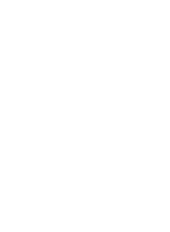 |
 |
 |

|
144 pp.
21 x 29 cm
112 ills
in colour and 43 in b/w
Hardcover
English / German.
ISBN: 978-3-89790-511-5 | Ready for shipping
34,00 € *
*int. retail price | Shipping cost
ARNOLDSCHE Art Publishers
Olgastraße 137, D–70180 Stuttgart
+49 (0)711 64 56 18–14
www.arnoldsche.com
|
|
 |
THE UNKNOWN WIENER WERKSTÄTTE
-Embroidery and Lace 1906 to 1930
Christoph von Thun-Hohenstein / Angela Völker (eds)
A rich inventory of previously unpublished documents boasting great artistic sophistication can be found in the Wiener Werkstätte archive in the MAK – Austrian Museum of Applied Arts / Contemporary Art on the design and production of lace and embroidery produced there between 1906 and 1930. Together with the objects kept in the museum they convey an authentic picture of the department’s extraordinary production. Around forty designers are known by name. The earliest pieces of embroidery, from 1906, derive from furniture upholstery belonging to the Wittgenstein family, while lace production did not begin until 1915 and consisted of braids and covers, also inserts for curtains and counterpanes. The book provides a great deal of new information on this hitherto littleknown Wiener Werkstätte department, including artists’ sketches and designs, blueprints, bobbin lace patterns, sample portfolios in WW design, and historical black-and-white photographs of the original objects.
The leading artists Dagobert Peche, Fritzi Löw-Lazar, Hilda Jesser-Schmid, Anny Schröder-Ehrenfest, Irene Schaschl-Schuster, Mathilde Flögl, Vally Wieselthier, Felice Rix-Ueno, Maria Likarz-Strauss, Maximilian Snischek, Eduard Josef Wimmer-Wisgrill, Josef Hoffmann
Angela Völker was head of the Textile Collection at the MAK in Vienna from 1977 to 2009. Her specialist areas are the fashion and textiles of the Wiener Werkstätte, Biedermeier textiles and oriental knotted carpets.
|

|
Posted 14 December 2017
|
Share this:
...
|
|
This book goes straight to my heart because it fills the gap between common household lace and embroidery made in the cottage industry as consumer goods to the best cultural artistic expression. Beautifully made, the photographs and graphic material, costumes and accessories, interiors and furniture alongside cushions, designs and pages from model books, this volume approaches in a comprehensive, in-depth manner the subject of unknown Wiener Werstätte embroidery and lace from 1906 to 1930. The reader will enjoy well-written descriptions of the designers and their cooperative way of working across disciplines along with a variety of decorations, motifs and patterns with related techniques including glass bead embroidery and the repurposing of used materials.
Special pages are devoted to each designer and their works alongside ample text. The chapters ‘Twenties’ and ‘The End of The Wiener Werkstätte’ close the book with descriptions of expositions, the industry and the insecure economic situation of the ‘20ties through to the final stock market crash that finished the Wiener Werkstätte business and the resulting auction of all goods in inventory when the registration of the company’s termination and liquidation was signed in 1932. After this, the artists’ association rapidly fell into oblivion until the mid-1960s when an international interest developed and this rediscovery was launched in Vienna by the Austrian Museum for the Applied Arts/Contemporary Art (MAK) where extensive parts of the Wiener Werkstätte Archive are kept.
Angela van der Burght
|

|

|

|

|

|
|
|
20 Josef Hoffmann (design), WW Fashion Department
(execution), ca. 1910
Ball dress
Mixed fabric, cotton, silk, Atlas, appliqué embroidery
145 Å~ 109 cm. MAK, T 11827
Photo: Georg Mayer / MAK – Austrian Museum of Applied
Arts / Contemporary Art
|
|
|
|
|
Maria Likarz-Strauss (design), 1919, Österreichische
Hausindustrie (execution), produced until 1921
Bead bag with lovers and lady on chaiselongue
Bead embroidery, top edge crocheted
23 Å~ 18 cm. MAK, T 10130
Photo: Georg Mayer / MAK – Austrian Museum of Applied
Arts / Contemporary Art
|
|
|
|
|
Maria Likarz-Strauss, 1919
Design for a bead bag with lovers and lady on
chaiselongue”
Paper, gouache, designated “Likarz”
25,5 Å~ 34,3 cm. MAK, KI 12318-22
Photo: MAK – Austrian Museum of Applied Arts /
Contemporary Art
|
|
|
|
|
|


